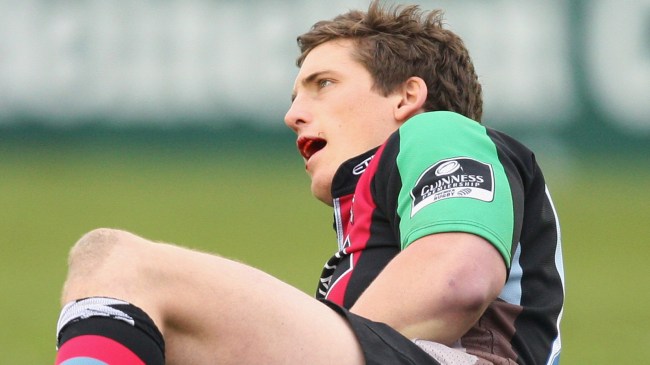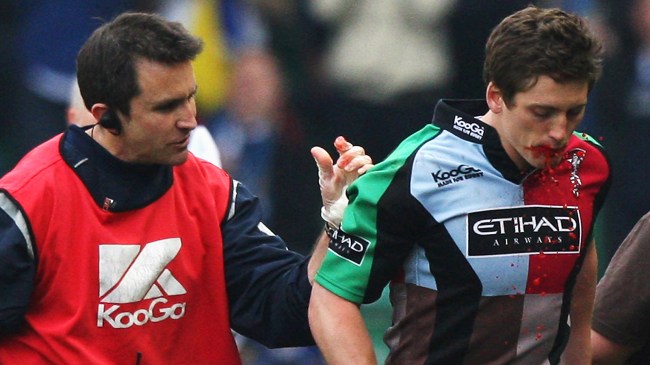
Getty Image
The sports world is no stranger to the scandals that have rocked various pastimes over the years. That includes rugby, which was temporarily turned on its head courtesy of a player who deployed a capsule of fake blood to give his team an advantage during a game.
Faking an injury is obviously a practice that’s frowned upon, but that’s never stopped athletes from doing exactly that in an attempt to gain an edge.
Soccer players have a tendency to act like they’ve been shot by a sniper perched at the top of the stadium in order to draw fouls and potentially milk the clock in certain situations, and there are plenty of instances where football players have mysteriously collapsed onto the gridiron in situations where their team needed a timeout they didn’t have.
It would be a stretch to label those fraudulent moves as an “elaborate ruse,” but I think it would be fair to apply that term to the strategy that was deployed in the rugby scandal that was dubbed “Bloodgate.”
A rugby player once used a blood capsule to force a substitution in a tight game

Getty Image
The incident in question transpired on April 12, 2009 during a Heineken Cup quarterfinal matchup between England’s Harlequins and Ireland’s Leinster, which gave new meaning to the “bad blood” between the two countries represented in the contest.
I’m going to assume a good chunk of the people reading this aren’t intimately familiar with the rules of rugby (in this case, we’re talking about rugby union, which features 15 players per team, as opposed to rugby league, which boasts 13 players on each side). However, you don’t really need to be an expert to understand what transpired.
Each team is allowed eight substitutions, and toward the middle of the game, Harlequins had used one of them to replace Nick Evans, a kicking threat who had gone down with a hamstring injury.
However, they’d exhausted all of them with around five minutes remaining in a match where they were trailing 6-5 and had the potential to take the lead with a drop goal worth three points (their second-best kicker had missed an attempt a few minutes prior).
Evans had reached a point where he was able to go back onto the pitch, but the only way Harlequins could earn the right to sub him back in was if a player qualified for a “blood replacement” (a term that should be pretty self-explanatory).
In a seemingly miraculous twist of fate, blood started to pour out of the mouth of winger Tom Williams. While it wasn’t entirely clear how he’d been injured, he was nonetheless replaced by Evans, who ultimately got the chance to convert the kick he missed before Leinster advanced with the 6-5 victory.
While the Irish side walked away with the win, they’d immediately cried foul after Williams started to bleed, as they were convinced he’d chomped down on a capsule of fake blood to force the substitution—which is exactly what had happened.
Following the game, their doctors stormed the opposing team’s locker room to try to verify the player had actually suffered an injury, and Williams managed to convince a team physician to perform a surgical incision in the hopes of putting together a convincing cover story.
Unfortunately, those efforts were ultimately in vain. Multiple rugby governing bodies conducted an investigation and determined it wasn’t even the first time Harlequins had harnessed the practice, and they handed out a slew of punishments as a result.
Williams was initially suspended for a year but had the ban reduced to four months after successfully arguing the club had attempted to make him the primary “Bloodgate” scapegoat.
The physician who made the cut had her medical license suspended, another doctor was banned for two years, and the director of the club was hit with a three-year suspension while Harlequin was forced to pay a £260,000 fine.